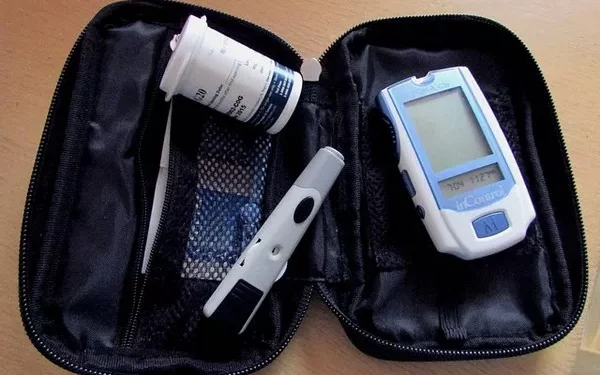Blood sugar, also known as blood glucose, is a critical component of your overall health. For individuals with diabetes and those at risk of developing it, maintaining ideal blood sugar levels is paramount in preventing complications and maintaining a healthy, active life. Understanding what constitutes ideal blood sugar levels, how they are measured, and the factors that influence them is crucial for effective diabetes management. This article explores these concepts in detail, offering a comprehensive guide to achieving and maintaining optimal blood sugar levels.
What is Blood Sugar and Why is It Important?
Blood sugar refers to the amount of glucose present in the blood. Glucose is a type of sugar that comes from the food we eat, particularly carbohydrates, and it serves as the body’s primary source of energy. The body regulates blood sugar levels through a complex system involving the pancreas, insulin, and other hormones. Insulin, a hormone produced by the pancreas, helps cells absorb glucose from the bloodstream for use as energy.
Maintaining blood sugar within a normal range is essential for overall health. If blood sugar levels become too high or too low, it can lead to a variety of health problems. In the case of diabetes, the body’s ability to regulate blood glucose is impaired, leading to chronic high blood sugar (hyperglycemia) or low blood sugar (hypoglycemia). Both extremes can cause significant damage to various organs and systems in the body.
Ideal Blood Sugar Levels: What Do They Look Like?
Ideal blood sugar levels vary depending on the time of day and whether a person has recently eaten. Generally, normal blood sugar levels are as follows:
Fasting blood sugar (before meals): The ideal range is between 70 and 100 milligrams per deciliter (mg/dL) for people without diabetes. For individuals with diabetes, the target range may be slightly higher, typically between 80 and 130 mg/dL, depending on the individual’s healthcare provider’s advice.
Postprandial blood sugar (after meals): The ideal range is usually below 140 mg/dL two hours after eating for people without diabetes. For those with diabetes, the goal is to keep blood sugar levels under 180 mg/dL two hours after meals.
HbA1c (long-term blood sugar control): The HbA1c test measures your average blood sugar level over the past 2-3 months. For most non-diabetic individuals, an HbA1c of less than 5.7% is considered normal. For people with diabetes, the goal is usually to maintain an HbA1c level of below 7%, though some individuals may have a target of 6.5% or lower, depending on their circumstances.
The ideal blood sugar level is not static and should be personalized to each individual’s health profile. People with diabetes, for instance, will have different targets depending on their age, activity levels, and other factors such as pregnancy, medications, and comorbid conditions.
Factors That Affect Blood Sugar Levels
Several factors influence blood sugar levels, including diet, exercise, stress, medications, and hormonal fluctuations. Here is an overview of some key elements:
1. Diet
What we eat plays a significant role in regulating blood sugar. Foods high in carbohydrates, especially refined carbohydrates and sugars, cause a rapid spike in blood glucose levels. Conversely, foods rich in fiber, such as whole grains, vegetables, and legumes, tend to slow the absorption of glucose into the bloodstream, helping to keep blood sugar levels stable.
Meals that include a balanced combination of protein, healthy fats, and fiber-rich carbohydrates are ideal for maintaining stable blood sugar. It’s also important to monitor portion sizes, as consuming too much food can lead to higher-than-ideal blood sugar levels.
2. Physical Activity
Exercise is one of the most effective ways to lower blood sugar levels naturally. During physical activity, muscles use glucose for energy, which helps reduce blood sugar levels. Regular exercise can improve insulin sensitivity, allowing the body to use glucose more effectively. Aerobic exercises (such as walking, running, and cycling) and strength training (such as weightlifting) can both be beneficial for maintaining ideal blood sugar levels.
3. Stress
When the body experiences stress, it releases stress hormones such as cortisol and adrenaline. These hormones trigger a rise in blood sugar to provide the body with extra energy to handle the perceived threat. Chronic stress can lead to consistently elevated blood sugar levels, making stress management a crucial aspect of diabetes control and overall health.
4. Medications
For individuals with diabetes, medications are often necessary to help regulate blood sugar. Insulin injections or oral medications that increase insulin sensitivity (such as metformin) may be prescribed depending on the type of diabetes and the individual’s health status. The timing and dosage of these medications, as well as how they interact with food and physical activity, can affect blood glucose levels.
5. Hormonal Changes
Hormones also play a significant role in blood sugar regulation. For example, women may experience fluctuations in blood sugar levels due to hormonal changes during pregnancy, menstruation, or menopause. Additionally, certain conditions such as thyroid disorders or adrenal gland issues can impact how the body regulates glucose.
6. Illness and Infection
When the body is fighting an illness or infection, blood sugar levels can fluctuate. Stress hormones released during illness can increase blood sugar, while certain infections may impair the body’s ability to process glucose. In people with diabetes, it is important to closely monitor blood sugar levels during sickness and make necessary adjustments to medication and diet.
How to Achieve and Maintain Ideal Blood Sugar Levels
Achieving and maintaining ideal blood sugar levels requires a combination of healthy habits, proper medical care, and self-monitoring. Here are several steps individuals can take to help regulate their blood sugar levels effectively:
1. Monitor Your Blood Sugar Regularly
The most effective way to track blood sugar levels is through regular monitoring. For people with diabetes, home blood glucose monitoring is essential for understanding how different foods, activities, and medications affect their blood sugar. It’s important to follow a consistent schedule for testing and to share the results with a healthcare provider to make necessary adjustments to the diabetes management plan.
2. Eat a Balanced, Healthy Diet
A healthy diet is key to maintaining ideal blood sugar levels. Focus on foods that are low in refined sugars and high in fiber, such as:
-
Non-starchy vegetables (broccoli, spinach, bell peppers)
-
Whole grains (brown rice, quinoa, oats)
-
Lean proteins (chicken, fish, tofu)
-
Healthy fats (avocado, olive oil, nuts, seeds)
Carbohydrates should be consumed in moderation and paired with protein or healthy fats to slow their absorption and prevent sharp spikes in blood sugar.
3. Stay Active
Regular exercise is one of the most effective ways to manage blood sugar. A combination of aerobic exercises (such as brisk walking or swimming) and resistance training (such as weightlifting or yoga) is recommended. Aim for at least 150 minutes of moderate-intensity aerobic activity per week, or 75 minutes of vigorous activity, along with muscle-strengthening activities on two or more days a week.
4. Manage Stress Effectively
Since stress can cause blood sugar levels to rise, practicing stress management techniques is essential for maintaining ideal glucose control. Methods such as meditation, deep breathing, yoga, and regular relaxation can help reduce the impact of stress on the body.
5. Stay Hydrated
Drinking plenty of water is crucial for maintaining healthy blood sugar levels. Dehydration can cause blood sugar levels to rise, as the body attempts to conserve water, resulting in higher concentrations of glucose in the bloodstream. Drinking water helps to flush excess sugar through urine, reducing the risk of hyperglycemia.
6. Get Adequate Sleep
Sleep plays a vital role in glucose metabolism. Chronic sleep deprivation can reduce insulin sensitivity, leading to higher blood sugar levels. Aim for 7-9 hours of quality sleep per night, and consider developing a consistent sleep schedule to promote healthy blood sugar control.
7. Take Medications as Prescribed
For individuals with diabetes, medications may be necessary to help regulate blood sugar. It is essential to follow the prescribed treatment plan, including the correct dosage and timing of insulin or oral medications. Any changes in medication should be discussed with a healthcare provider.
8. Work with Healthcare Providers
Regular check-ups with healthcare providers are essential for managing blood sugar levels, particularly for individuals with diabetes. Your healthcare team can help you set personalized targets for blood sugar control, monitor your progress, and adjust treatment plans as needed.
Conclusion
Achieving and maintaining ideal blood sugar levels is crucial for overall health, particularly for those with diabetes. By understanding what constitutes ideal blood sugar levels, regularly monitoring blood glucose, and adopting a healthy lifestyle, individuals can effectively manage their blood sugar and reduce the risk of complications. A combination of proper diet, regular exercise, stress management, and medication adherence, along with regular healthcare consultations, can help ensure that blood sugar levels stay within a healthy range. With these strategies in place, it’s possible to live a healthy and active life while managing blood sugar effectively.
Related topics:
When Should a Diabetic Check Their Sugar?



























